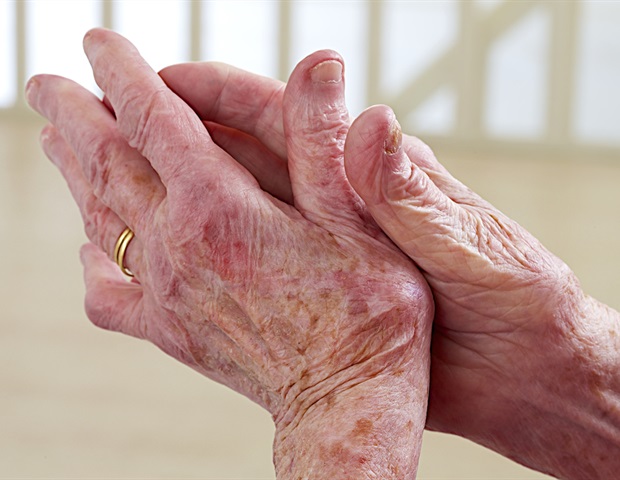New technology enables quick diagnosis of arthritis using synovial fluid

Dr. Ho Sang Jung and his research team from the Advanced Bio and Healthcare Materials Research Division at the Korea Institute of Materials Science (KIMS), in collaboration with Seoul St. Mary's Hospital, have developed a technology that enables the diagnosis of osteoarthritis and rheumatoid arthritis within 10 minutes using synovial fluid. This marks the first such achievement in Korea. According to some studies, over 50% of the population aged 65 and older experience symptoms of osteoarthritis, while rheumatoid arthritis is known to be a serious chronic disease that affects approximately 1 in 100 people over the course of their lifetime. Although osteoarthritis and rheumatoid arthritis may appear similar, they differ in both their causes and treatments, making accurate differentiation at the early diagnosis stage critically important. Until now, diagnosis has relied on X-rays, MRI scans, and blood tests, which are time-consuming, costly, and limited in accuracy. The human joints contain a fluid known as synovial fluid. The research team focused on the differences in the composition of metabolites-byproducts of chemical processes occurring within the body-present in this fluid. By analyzing these metabolic differences, they developed a technology capable of distinguishing between osteoarthritis and rheumatoid arthritis within 10 minutes, as well as assessing the severity of rheumatoid arthritis. The research team utilized Surface-Enhanced Raman Scattering (SERS) technology, a phenomenon in which the optical signals of molecules are amplified by several million times. This technology amplifies signals from trace molecules present in synovial fluid and, through a combination of AI-based analysis and mathematical algorithms, detects minute substances responsible for arthritis. In addition, the team developed a simple and rapid diagnostic method using a sensor composed of a sea urchin-shaped gold nanostructure formed on a paper surface with high moisture absorption, enabling efficient detection via body fluids. In collaboration with Seoul St. Mary's Hospital, the research team conducted tests using this technology on 120 patients. The results showed that osteoarthritis and rheumatoid arthritis could be diagnosed and distinguished with an accuracy of over 94%. Furthermore, the technology achieved over 95% accuracy in determining the severity of rheumatoid arthritis. These findings demonstrate that the technology not only significantly reduces the time and cost of arthritis diagnosis but also ensures a high level of diagnostic accuracy. If this technology is commercialized, it will not only aid in diagnosis but also be highly useful in monitoring treatment progress. We also plan to continue expanding our research to cover a wider range of diseases in the future." Dr. Ho Sang Jung, lead researcher at KIMS This research was funded by the Bio & Medical Technology Development Program and the Global Young Researcher Program of the National Research Foundation of Korea (NRF), as well as the Materials and Components Technology Development Program of the Ministry of Trade, Industry and Energy (MOTIE). The research findings were published online on March 30 and will appear in the April 2025 issue of Small (IF: 13), a globally renowned scientific journal in the field of nanomaterials.










![Pakistan reinforces troops on the border with India, says invasion is imminent, and claims to only use nukes if Pakistan's existence is threatened. That's SO reassuring [News]](https://img.fark.net/images/2013/site/farkLogo2Big.gif)
!["The judge asked the juror 'Do you know anyone else here in the courtroom?'" 'Well, yes,' and he said, 'OK, who do you know?' and she said, 'My husband, the juror in the back' [Amusing]](https://usrimg-850.fark.net/z/zY/fark_zYtQT7Ybm6rAOOomC4n_iaMHalE.png?AWSAccessKeyId=JO3ELGV4BGLFW7Y3EZXN&Expires=1746417600&Signature=GLoUTlh2vjK4HcixEz0DPwuQsO4%3D)






